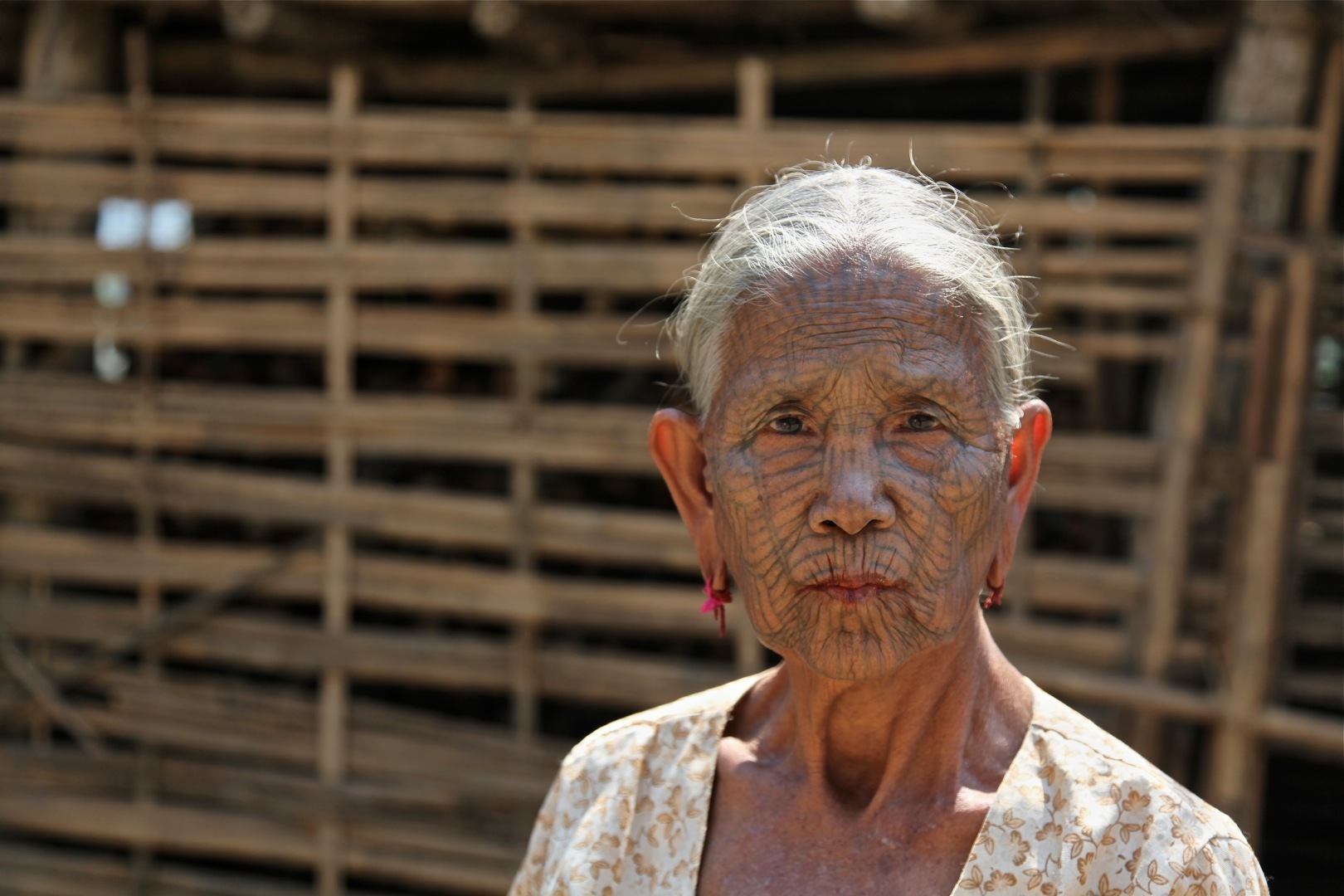|
Sone Thin Par
Sone Thin Par ( my, ဆုန်သင်းပါရ်; also spelt Sung Tin Par, Sung Thin Par, Sung Tin Par) is a prominent Burmese rock singer-musician of ethnic Chin descent. She rose to fame in 1998, and ended a 7-year hiatus from the music industry in December 2012, with the release of her fourth solo album, ''Thit'' (). She was selected to sing the 2013 Southeast Asian Games' official song, "Colorful Garden" () in December 2013. Sung Tin Par was born in Rangoon, Burma, to Pu Sang Nawn, a police officer, and Pi Nawn Tang. She was named by her grandmother; her name means "treasured flower" in the Chin language. A devout Christian, Sung married Sang Za Lian, also known as Htin Aung, on 5 May 2010. Discography * ''Ko A-kyaung Nae Ko'' () (2004) * ''Set Yan'' () (2004) * ''Min Ko'' () (2004) * ''Thit'' () (2012) * ''Lo Yar Su'' () (2017) References See also * Music of Myanmar The music of Myanmar (or Burma) ( my, မြန်မာ့ဂီတ) shares many similar ... [...More Info...] [...Related Items...] OR: [Wikipedia] [Google] [Baidu] |
Rangoon
Yangon ( my, ရန်ကုန်; ; ), formerly spelled as Rangoon, is the capital of the Yangon Region and the largest city of Myanmar (also known as Burma). Yangon served as the capital of Myanmar until 2006, when the military government relocated the administrative functions to the purpose-built capital city of Naypyidaw in north central Myanmar. With over 7 million people, Yangon is Myanmar's most populous city and its most important commercial centre. Yangon boasts the largest number of colonial-era buildings in Southeast Asia, and has a unique colonial-era urban core that is remarkably intact. The colonial-era commercial core is centered around the Sule Pagoda, which is reputed to be over 2,000 years old. The city is also home to the gilded Shwedagon Pagoda – Myanmar's most sacred and famous Buddhist pagoda. Yangon suffers from deeply inadequate infrastructure, especially compared to other major cities in Southeast Asia, such as Jakarta, Bangkok or Hanoi. Th ... [...More Info...] [...Related Items...] OR: [Wikipedia] [Google] [Baidu] |
Chin State
Chin State (, ) is a state in western Myanmar. The Chin State is bordered by Sagaing Division and Magway Division to the east, Rakhine State to the south, Bangladesh to the south-west, and the Indian states of Mizoram to the west and Manipur to the north. The population of Chin state is about 478,801 in 2014 census. The capital of the state is Hakha. The state is a mountainous region with few transportation links. Chin State is sparsely populated and remains one of the least developed areas of the country. Chin State has the highest poverty rate of 73% as per the released figures from the first official survey. The official radio broadcasting dialect of Chin is Falam. There are 53 different subtribes and languages in Chin State. There are nine townships in Chin State: Hakha, Thantlang, Falam, Tedim, Tonzang, Matupi, Mindat, Kanpetlet and Paletwa townships. In 1896, Mindat and Kanpetlet were placed under Pakokku Hill Tracts District of British Burma later emerged into ... [...More Info...] [...Related Items...] OR: [Wikipedia] [Google] [Baidu] |
Pop Music
Pop music is a genre of popular music that originated in its modern form during the mid-1950s in the United States and the United Kingdom. The terms ''popular music'' and ''pop music'' are often used interchangeably, although the former describes all music that is popular and includes many disparate styles. During the 1950s and 1960s, pop music encompassed rock and roll and the youth-oriented styles it influenced. '' Rock'' and ''pop'' music remained roughly synonymous until the late 1960s, after which ''pop'' became associated with music that was more commercial, ephemeral, and accessible. Although much of the music that appears on record charts is considered to be pop music, the genre is distinguished from chart music. Identifying factors usually include repeated choruses and hooks, short to medium-length songs written in a basic format (often the verse-chorus structure), and rhythms or tempos that can be easily danced to. Much pop music also borrows elements from other st ... [...More Info...] [...Related Items...] OR: [Wikipedia] [Google] [Baidu] |
Rock Music
Rock music is a broad genre of popular music that originated as "rock and roll" in the United States in the late 1940s and early 1950s, developing into a range of different styles in the mid-1960s and later, particularly in the United States and United Kingdom.W. E. Studwell and D. F. Lonergan, ''The Classic Rock and Roll Reader: Rock Music from its Beginnings to the mid-1970s'' (Abingdon: Routledge, 1999), p.xi It has its roots in 1940s and 1950s rock and roll, a style that drew directly from the blues and rhythm and blues genres of African-American music and from country music. Rock also drew strongly from a number of other genres such as electric blues and folk music, folk, and incorporated influences from jazz, classical, and other musical styles. For instrumentation, rock has centered on the electric guitar, usually as part of a rock group with electric bass guitar, drums, and one or more singers. Usually, rock is song-based music with a Time signature, time signature using ... [...More Info...] [...Related Items...] OR: [Wikipedia] [Google] [Baidu] |
Chin People
The Chin people (, ) are a Southeast Asian people native to Chin State and its neighbouring states of Myanmar.Head, JonathanBurma's 'abused Chin need help' ''BBC News'', Jan 28, 2009, accessed Jan 28, 2009 The Chin are one of the founding groups (Chin, Kachin, Shan and Bamar) of the Union of Burma. The Chin speak a variety of related languages, share elements of cultures and traditions. According to the British state media BBC News, "The Chin people... are one of the most persecuted minority groups in Burma." These people predominantly live in the Chin State, Bago Division, Ayeyarwady Division, Magwe Division, Rakhine State and Sagaing Region of Myanmar, but are also spread throughout Burma, Bangladesh and India. In the 2014 Burmese ethnic census, the Chin ethnicity was again dismissed by the people of the Chin State. It is to be noted that the Mizo people in Mizoram, India and the Chin are both Chin-Kuki-Mizo people, who share the same history with each other. The diffe ... [...More Info...] [...Related Items...] OR: [Wikipedia] [Google] [Baidu] |
2013 Southeast Asian Games
The 2013 Southeast Asian Games ( my, ၂၀၁၃ ခုနှစ် အရှေ့တောင် အာရှ အားကစား ပြိုင်ပွဲ), officially known as the 27th Southeast Asian Games, or the 27th SEA Games, and commonly known as Naypyitaw 2013, was a Southeast Asian multi-sport event took place in Naypyidaw, Nay Pyi Taw, Myanmar from 11 to 22 December 2013, Around 4730 athletes from 11 participating nations competed at the games, which featured 460 events in 34 sports. The games were held from 11 to 22 December 2013. It was the third time for Myanmar in hosting the Southeast Asian Games. The country hosted the Games in 1961 Southeast Asian Peninsular Games, 1961 and 1969 Southeast Asian Peninsular Games, 1969 respectively in Yangon, then capital of the country. Singapore withdrew its 2015 Southeast Asian Games, hosting rights due to expected delays in the completion of its new New Singapore National Stadium, national stadium, it eventually hosted in ... [...More Info...] [...Related Items...] OR: [Wikipedia] [Google] [Baidu] |
Kukish Languages
The Kuki-Chin languages (also called Kuki-Chin-Mizo, Kukish or South-Central Tibeto-Burman languages) are a branch of 50 or so Sino-Tibetan languages spoken in northeastern India, western Myanmar and southeastern Bangladesh. Most speakers of these languages are known as Mizo in Mizoram and Manipur. Also, as Kukī in Assamese and Bengali and as Chin in Burmese; some also identify as Zomi. Mizo is the most widely spoken of the Kuki-Chin languages. Kuki-Chin is sometimes placed under Kuki-Chin–Naga, a geographical rather than linguistic grouping. Most Kuki-Chin languages are spoken in and around Chin State, Myanmar, with some languages spoken in Sagaing Division, Magway Region and Rakhine State as well. In Northeast India, many Northern Kuki-Chin languages are also spoken in Mizoram State and Manipur State of India, especially in Churachandpur District, Pherzawl District, Kangpokpi District, Senapati District. Northwestern Kuki-Chin languages are spoken mostly in Chande ... [...More Info...] [...Related Items...] OR: [Wikipedia] [Google] [Baidu] |
Mizzima News
Mizzima News ( my, မဇ္ဈိမသတင်း, Ma.jjhi.ma.) is a Burmese multimedia news organisation. It was established in August 1998 by a group of Burmese journalists in exile in New Delhi. The International Press Institute International Press Institute (IPI) is a global organisation dedicated to the promotion and protection of press freedom and the improvement of journalism practices. The institution was founded by 34 editors from 15 countries at Columbia Universit ... awarded Mizzima News its Free Media Pioneer award in 2007. Organisation Mizzima Media Co. Ltd. is a registered Myanmar company. It produces a daily digital Mizzima newspaper in Burmese language, a weekly Mizzima business magazine, weekly television programs – aired by Myanma Radio & Television (MRTV) – and websites in both the Burmese and English language. Additionally, Mizzima media products are also available on various digital platforms such as Android and iPhones. References External links * ... [...More Info...] [...Related Items...] OR: [Wikipedia] [Google] [Baidu] |
Music Of Myanmar
The music of Myanmar (or Burma) ( my, မြန်မာ့ဂီတ) shares many similarities with other musical styles in the region. Traditional music is melodic, having its own unique form of harmony, often composed with a (''na-yi-se''), a (''wa-let-se'') or a () time signature. In Burmese, music segments are combined into patterns, and then into verses, making it a multi-level hierarchical system. Various levels are manipulated to create a song. Harmony in ''Mahagita'' (the Burmese body of music) is known as ''twe-lone,'' which is similar to a chord in western music. For example, C is combined with F or G. Musical instruments include the brass se (which is like a triangle), ''hne'' (a kind of oboe), the bamboo wa, as well as the well-known '' saung'', a boat-shaped harp. Traditionally, the instruments are classified into five groups called (). These instruments are played on a musical scale consisting of seven tones, each associated with an animal that is said to ... [...More Info...] [...Related Items...] OR: [Wikipedia] [Google] [Baidu] |
Living People
Related categories * :Year of birth missing (living people) / :Year of birth unknown * :Date of birth missing (living people) / :Date of birth unknown * :Place of birth missing (living people) / :Place of birth unknown * :Year of death missing / :Year of death unknown * :Date of death missing / :Date of death unknown * :Place of death missing / :Place of death unknown * :Missing middle or first names See also * :Dead people * :Template:L, which generates this category or death years, and birth year and sort keys. : {{DEFAULTSORT:Living people 21st-century people People by status ... [...More Info...] [...Related Items...] OR: [Wikipedia] [Google] [Baidu] |
21st-century Burmese Women Singers
The 1st century was the century spanning AD 1 ( I) through AD 100 ( C) according to the Julian calendar. It is often written as the or to distinguish it from the 1st century BC (or BCE) which preceded it. The 1st century is considered part of the Classical era, epoch, or historical period. The 1st century also saw the appearance of Christianity. During this period, Europe, North Africa and the Near East fell under increasing domination by the Roman Empire, which continued expanding, most notably conquering Britain under the emperor Claudius (AD 43). The reforms introduced by Augustus during his long reign stabilized the empire after the turmoil of the previous century's civil wars. Later in the century the Julio-Claudian dynasty, which had been founded by Augustus, came to an end with the suicide of Nero in AD 68. There followed the famous Year of Four Emperors, a brief period of civil war and instability, which was finally brought to an end by Vespasian, ninth Roman emperor ... [...More Info...] [...Related Items...] OR: [Wikipedia] [Google] [Baidu] |

.png)





